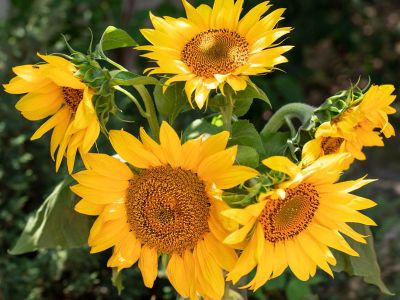The answer depends on where you live, but planting sunflowers late in summer is a viable option for many gardeners.
Can You Plant Sunflowers in Late Summer?
Sunflowers are generally planted in spring or early summer for late summer and fall blooming. However, if you live in a warmer climate, you can get a second planting in for mid and late fall flowers. Late season sunflowers may grow a little shorter or produce fewer flowers because there will be fewer daylight hours. You can still get a second blossoming of sunflowers as long as it isn’t too cold though. In USDA zones 8 and higher you should be able to get in a second crop of sunflowers but watch out for early frosts. Start sowing the seeds in mid or late August for the best results.
Growing Sunflowers in Late Summer
If you do choose to grow a new crop in the late summer, know that you need between 55 and 70 days between sowing the seeds and getting flowers. Use this to time your planting based on your areas first frost. Sunflowers can tolerate some light frost. As with spring plantings, make sure you sow sunflower seeds in a sunny spot with soil that is rich in nutrients and drains well. Follow the sowing directions for the type of sunflower you have but generally the seeds should go about a half inch (1 cm.) deep in the soil. Once the seeds are in the ground, keep the soil moist and thin the seedlings as they emerge. The largest varieties need a couple of feet (61 cm.), while smaller sunflowers may need just 6 to 8 inches (15-20 cm.). Keep weeds under control, add fertilizer only if your soil isn’t fertile, and enjoy the additional blooms you get this fall.
